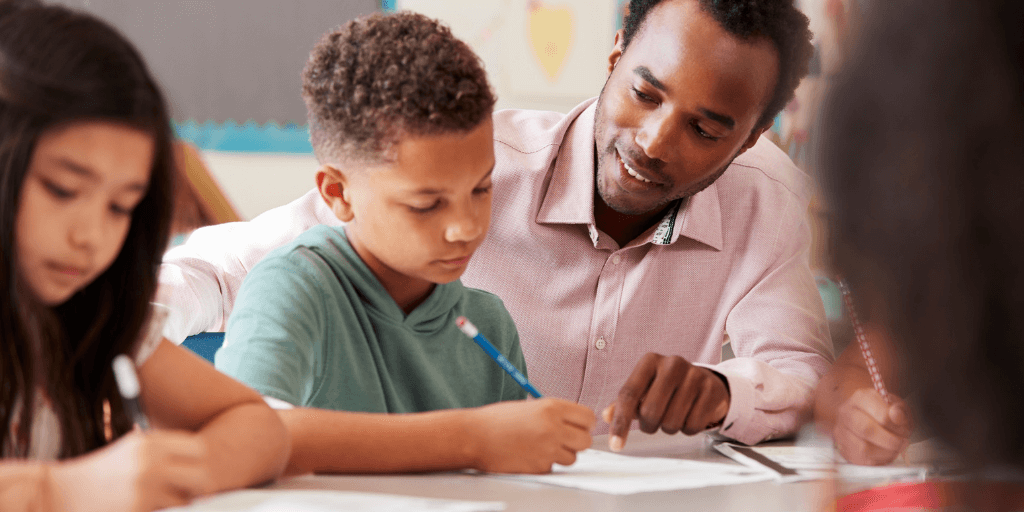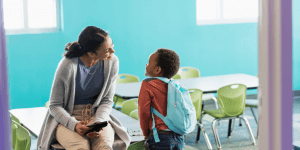
Trauma informing and shaping our school communities – the students have been leading us where we need to go.
This article was authored by Deborah Costa, a registered psychologist, and school counsellor
with a professional area of interest and development in working to support traumatised children
and young people in schools. She was also the recipient of an NSW Premier’s study scholarship in 2018.
In the 10 years that I’ve so far had the privilege of quietly and determinedly watching the trauma-informed practice in schools space develop and grow, and in doing the work to become a trauma-informed schools clinician, educator, and leader I’ve witnessed a phenomenal expansion in the availability of knowledge and resources.
There was a time when my search for trauma-informed practices in schools revealed the Australian Childhood Foundation and the Trauma Learning Policy Initiative, National Child Traumatic Stress Network, Child Trauma Academy and Substance Abuse and Mental Health Services Administration in the US and these resources alongside the incredibly courageous, strong, adaptive and vulnerable children and young people I’ve worked with, and continue to work with, have provided enriched opportunities to enquire, consider, research, absorb, reflect and wonder upon.
And, I’ve witnessed the shift…a gentle swell toward the now safe space of curiously enquiring and thinking about what’s been misunderstood with these students for so long.
A gentle swell toward the possibility that we as the adults in these childrens’ lives actually may be able to do something with them, for them, other than admonish them and exclude them, that perhaps it doesn’t have to be as hard as it’s been, that perhaps we can shift the focus from expecting the child to change to look at what else can change and what else can help and what else can support. And when we shift this focus away from just expecting the child to change the possibilities are many.
Today, the same search yields many websites, organisations, consultants, and with various approaches, one size fits all models and trainers. Now I wonder, how does someone new to this field; a beginning teacher, an experienced teacher, a new school leader, an experienced school leader, a thirsty school counsellor or psychologist, a fourth-year student, begin to navigate this field. To make sense of it, to develop a framework for understanding it, to know how to put it into practice, to know what to put into practice. After all, their students are leading them to navigate this space and navigating they are.

Educators are creative, flexible, resilient, dynamic, energetic, diverse and enthusiastic and many of them want to learn and adapt to their unique style and context what they can do for their students. They are diving headfirst into this, as and when they are ready. Into the realm of what’s been missing from university lectures, what’s been missing from textbooks, what’s been missing from career information sessions and what’s been so present and prominent in their school communities; classrooms, corridors, and playgrounds. Those who are open to knowing and understanding are READY TO LEARN.
With so much information available ahead of systems direction and leadership, what principles can we as educators look to be guided by?
When we seek to develop a trauma-informed approach in our schools what is it we are seeking?
When we want to become trauma-informed what is it we are wanting?
When we say we are trauma-informed what is it we are saying?
When we practice trauma-informed what is it we are practicing? and
When we say we are trauma-informed what can others expect or hope for from our school communities for traumatised students….educators, students, parents, carers, clinicians, health and child protection agencies?
Becoming ‘trauma-informed’ takes time and determination; to learn, to commit, to reflect, to collaborate, to continue, to know the paradigm and practice shift that is core to shifting from believing ‘what’s wrong with the student’ to contemplating ‘what’s happened to the student’ and then considering how to respond and support.
I continue to be guided by the National Child Traumatic Stress Network framework on creating, supporting and sustaining trauma-informed schools;
- Realising the widespread impact of trauma and pathways to recovery;
- Recognising trauma signs and symptoms;
- Responding by integrating knowledge about trauma into all facets of the system; and
- Resisting retraumatisation of trauma-impacted individuals by decreasing the occurrence of unnecessary triggers and by implementing trauma-informed policies, procedures and practices (The National Child Traumatic Stress Network NCTSN https://www.nctsn.org/).
I continue to be guided by the research and resources available internationally; including the American Institutes for Research, the Child Health and Development Institute, the National Center on Safe Supportive Learning Environments, the National Center for School Mental Health, the Treatment and Services Adaptation Center, centers of excellence I had the privilege of visiting during my study tour throughout the US and the UK recently;
I continue to be guided by the work of the Australian Childhood Foundation and leaders in the field they host for us; and
I continue to be guided by the students and schools that I support, as they are leading me to where I need to go.

Trauma informed practice in schools is about supporting the education of traumatised students and supporting the academic learning of these students, yet we must remember that curriculum is just one part of their education, one part of their schooling and one part of their learning. The ‘education’ and ‘learning’ these students are engaging with is constant. All students are continuously bombarded with messages in schools about who they are and how they are, especially about how they connect and belong, about whether they connect and belong, and whether they deserve to connect and belong, about how they learn, about whether they can learn, what they can learn and ultimately what they do learn.
In schools, students are continuously engaging in interactions with adults and other students that provide learning experiences about the world; about their world and about the world of others, and for traumatised students these learning experiences are especially powerful. Outside of the family unit schools provide the one place during students’ formative developmental years where their existing world views and views of self can be challenged or reinforced, where their interactions can be healing or retraumatising and where their experiences can be growth promoting or survival maintaining.
The science is telling – children and young people develop within the context of responsive and supportive relationships and environments. Trauma informed practice in schools is about creating and providing these responsive and supportive relationships and environments and the mandate comes from schools being uniquely placed to provide both.
Resources:
American Institutes for Research https://www.air.org/
Australian Childhood Foundation https://www.childhood.org.au/
Child Health and Development Institute https://www.chdi.org/
Child Trauma Academy https://childtrauma.org/
National Center on Safe Supportive Learning Environments https://safesupportivelearning.ed.gov/
National Center for School Mental Health http://csmh.umaryland.edu/
National Child Traumatic Stress Network https://www.nctsn.org/
Substance Abuse and Mental Health Services Administration https://www.samhsa.gov/
Trauma and Learning Policy Initiative https://traumasensitiveschools.org/about-tlpi/
Treatment and Services Adaptation Center http://traumaawareschools.org/
